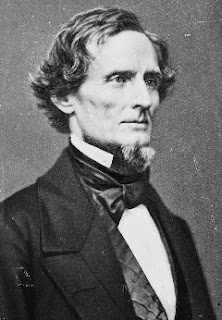
History
During the early years of the Roman Empire, blond hair was associated with prostitutes. The preference changed to bleaching the hair blond when Greek culture, which practiced bleaching, reached Rome, and was reinforced when the legions that conquered Gaul returned with blond slaves. Sherrow also states that Roman women tried to lighten their hair, but the substances often caused hair loss, so they resorted to wigs made from the captives' hair. The bleaching agent used by the Roman women was composed of a solution of ashes from burnt nuts or plants.
Diodorus Siculus, a 1st century BC Greek historian, described in detail how Celtic people bleached their hair: "Their aspect is terrifying... They are very tall in stature, with rippling muscles under clear white skin. Their hair is blond, but not naturally so: they bleach it, to this day, artificially, washing it in lime and combing it back from their foreheads. They look like wood-demons, their hair thick and shaggy like a horse's mane. Some of them are clean-shaven, but others—especially those of high rank—shave their cheeks but leave a moustache that covers the whole mouth...".
During the medieval period, Spanish women preferred to dye their hair black, yet by the time of the Renaissance in the 16th century the fashion (imported from Italy) was to bleach their hair blond or dye it red. Between the Renaissance and the Enlightenment, a number of dangerous hair bleaching methods remained widely practiced, including the use of sulfuric acid, which was an accepted form of hair coloring around the 1600s, and laying out in the sun with hair covered in lye a century later.
In Sir Hugh Plat's 1602 work Delightes for Ladies the use of oil of vitriol (sulfuric acid) to bleach black hair to chestnut is described as: "Take one part of lead calcined with Sulphur, and one part of quicklime: temper them somewhat thin with water: lay it upon the hair, chafing it well in, and let it dry one quarter of an hour or thereasbouts; the wash the same off with fair water divers times: and lastly with soap and water, and it will be a very natural hair-color. The longer it lyeth upon the hair, the browner it groweth, This coloureth not the flesh at all, and yet it lasteth very long in the hair."
Modern history
Howard Hughes' 1931 movie Platinum Blonde starring Jean Harlow is noted to have popularized platinum blonde hair color in the US. After the movie's success Hughes's team established a chain of "Platinum Blonde clubs" in several cities and offered a $10,000 prize that would go to any hairdresser who could copy Harlow's shade. Though Harlow denied her hair was bleached, the platinum blonde color was reportedly achieved with a weekly application of ammonia, Clorox bleach, and Lux soap flakes. This process weakened and damaged Harlow's naturally ash-blonde hair.
During the 1930s Lawrence M. Gelb advanced the formulas of the bleaching products. In 1950, Clairol, the company Gelb founded with wife Jane Clair, introduced the first one-step hair dye product that lightened hair, which became a huge success with the masses.
Melanin pigments, which give hair a darker color, can be broken down with oxidation. Most commercial bleaching formulas contain hydrogen peroxide and persulfate salts, which under alkaline conditions created by ammonia or monoethanolamine can bleach the hair. Persulfate salts, in combination with hydrogen peroxide or alone, are known for their ability to degrade organics after activation with heat, transition metals, ultraviolet light, or other means that produce the sulfate radical. Without activation, the persulfate anion is known to react with some organic chemicals, although with slow kinetics. When melanin is oxidized, oxygen gas is released. Products for bleaching one's hair at home usually contain a 6% solution of hydrogen peroxide, while products for use in a hair salon can contain up to 9%. Hair bleaching products can damage hair and cause severe burns to the scalp when applied incorrectly or left on too long.
Medical significance
Drug testing methods using hair samples are found to be disrupted by chemical hair treatments including bleaching. According to a 2019 study bleaching has caused strong chemical degradation on cannabinoids in hair, while permanent colorings in single applications had only negligible effects on cannabinoids. A 2021 study found similar results for methamphetamine concentrations in hair.
- 1 1/2 cups shredded Cheddar cheese (divided)
- 2 tablespoons all-purpose flour
- 1 cup milk
- 1 teaspoon Italian seasoning
- 1 teaspoon onion powder
- 3/4 teaspoon salt
- 1/4 teaspoon black pepper
- 6 Russet potatoes, cut into 1/4-inch slices
- 3 tablespoons butter
- 2 tablespoons grated Parmesan cheese
- Preheat oven to 375º. Coat an 8-inch square baking dish with cooking spray.
- In a medium bowl, combine 1 cup cheddar cheese, the flour, milk, Italian seasoning, onion powder, salt, and pepper.
- Arrange half the potato slices in the baking dish. Pour half the cheese mixture over potatoes. Arrange remaining potatoes in baking dish, and pour remaining cheese mixture over potatoes. Dot with butter.
- Cover and bake 45 minutes. Remove potatoes from oven, stir gently, cover, and return to oven 20 additional minutes. Uncover potatoes and sprinkle evenly with remaining 1/2 cup cheddar cheese and the Parmesan cheese. Return to oven to bake 5 to 8 additional minutes, or until cheese is melted. Serve immediately.
1889 – The first long-distance electric power transmission line in the United States is completed, running 14 miles (23 km) between a generator at Willamette Fallsand downtown Portland, Oregon.
1940 – World War II: The Luftwaffe bombs Paris.
1943 – In Los Angeles, California, white U.S. Navy sailors and Marines clash with Latinoyouths in the Zoot Suit Riots.
1965 – The launch of Gemini 4, the first multi-day space mission by a NASA crew. Ed White, a crew member, performs the first Americanspacewalk.
1968 – Valerie Solanas, the author of SCUM Manifesto, attempts to assassinate Andy Warhol by shooting him three times.
2013 – The trial of United States Army private Chelsea Manning for leaking classified material to WikiLeaks begins in Fort Meade, Maryland.
And births this date include....
1808 – Jefferson Davis, American colonel and politician, President of the Confederate States of America (d. 1889)
1925 – Tony Curtis, American actor and singer (d. 2010)

1967 – Anderson Cooper, American journalist and author









